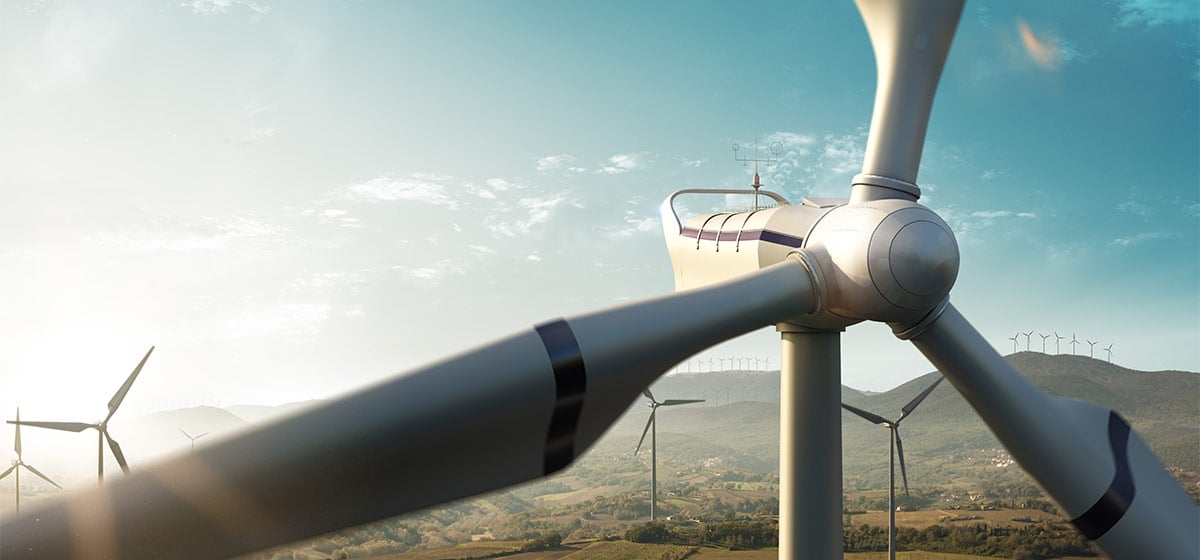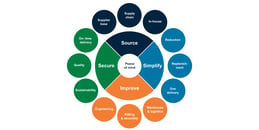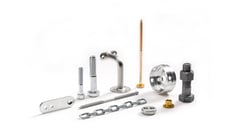- Insights
- The Solutionists Hub
- Why manufacturers need to set carbon emissions targets
Why manufacturers need to set carbon emissions targets

Since the industrial revolution, the average global temperature has risen by 1.2ºC, with melting glaciers and rising sea levels as a result. The impacts of climate change include flooding, drought, and the displacement of millions of people, driving them into poverty and hunger and increasing the risk of conflict.
In fact, the World Health Organisation (WHO) estimates that 700 million people will be at risk of displacement from drought by 2030. That's why urgent actions are needed to save lives and prevent suffering, which is key to reaching the Agenda 2030 and the UN Sustainable Development Goals.
Due to the urgency of the situation, evolving environmental regulations, and a growing awareness of sustainability among customers, companies are now incorporating sustainability into their business processes and decision-making.
Carbon emissions are a major factor in a company's overall environmental sustainability, and reducing emissions requires measuring them and setting targets for the future. Here's some important questions to consider if your company is facing pressure to reduce emissions, or if you're just getting started with your sustainability work.

Has your company set carbon targets?
Stay ahead of regulations by proactively setting Science Based Targets. These are emissions targets designed to align with the Paris Agreement that aim to provide a pathway to reduced emissions for the companies that adopt them. The Science Based Targets initiative (SBTi) sets guidelines and validates the targets, and so far, over 4000 companies worldwide have already started working with them. Setting Science Based Targets now will reduce future transition risks as the pressure to become sustainable grows, while also increasing your competitiveness by reducing energy and emissions-related costs.
How can you measure and track progression?
Tracking progress is necessary to meet carbon goals and show accountability. If you're not measuring your current emissions, it's impossible to know if you're improving. However, your company's carbon footprint includes all areas of operations, even your supply chain, where it can be difficult to get an overview. To accurately measure emissions here, you would need input from all your suppliers to calculate the carbon footprint of your products. The alternative is to work with a supply chain partner, who can help you source this information.
How do you drive improvements?
New customer demands in sustainability require continuous improvements over the long term and substantial resources to succeed. If you work with many suppliers and have high ambitions, working to reduce emissions will require a lot of energy and time — or the assistance of a supply chain partner with strong decarbonisation commitments and capabilities.
How do you avoid carbon-related risks?
Failure to recognise the importance of sustainability and emissions reduction is a major risk. As new regulations are introduced to combat climate change and customers increase their sustainable demands, unsustainable companies will suffer commercially. That's why choosing suppliers and partners who are at the forefront of sustainability is essential when the market situation is changing so rapidly.
How Bufab provides peace of mind
We aim to align our value chain with the efforts to limit the average global temperature increase to 1.5°C over pre-industrial levels. To do that, we are reducing our emissions to zero internally by 2030 and by 55% externally by 2031, decreasing 5.5% annually through our Science Based Targets.
Bufab's commitment to reducing emissions will support customers’ goals, and our supplier engagement program will ensure ongoing improvement.
Bufab can also help customers with access to data on average carbon emissions, a key step in calculating a company's total carbon footprint.
Sustainability is becoming a pressing topic for manufacturers, so if you want to see where your C-parts operation fits in with your overall sustainability work, you can find more information here — and download our guide to sustainability trends for manufacturers below to find out more about the challenges you might be facing in future.
And don't hesitate to get in touch if you need input on the current environmental impact of your C-parts.
Get new knowledge every week!
Related
-
By Sergio BrambilaSustainability targets and KPIs to implement in the purchasing department
-
By Kadi MeriväljaC-Parts Purchasing: Handling Your Sustainable Purchasing Policy
-
By Patrik Lundström TörnquistSustainability Challenges With C-Parts, and How to Manage Them
-
By Carina LööfSustainable C-Parts: What You Need to Know
-
By Niklas LindsköldCBAM: How will it affect European manufacturers?
-
By Niklas LindsköldHuman rights due diligence: Is your supply chain under control?
-
By Niklas LindsköldChemical compliance: What manufacturing companies need to know
-
By Niklas LindsköldConflict minerals: How to avoid them in your manufacturing operation










